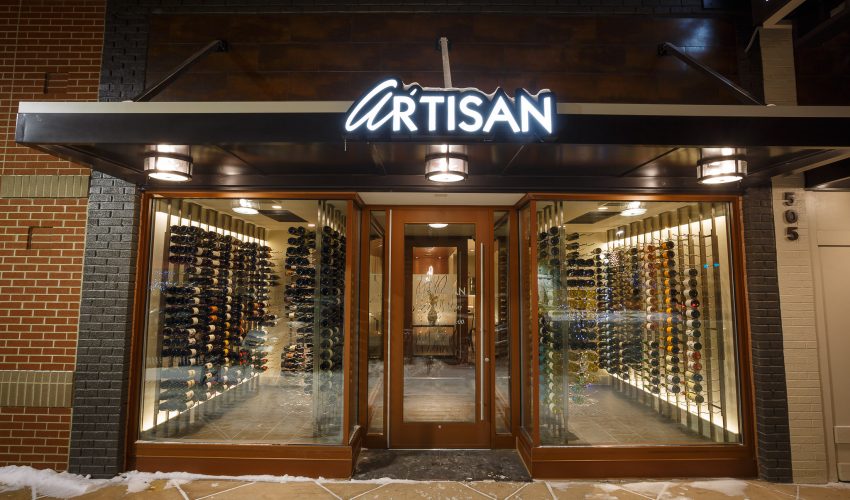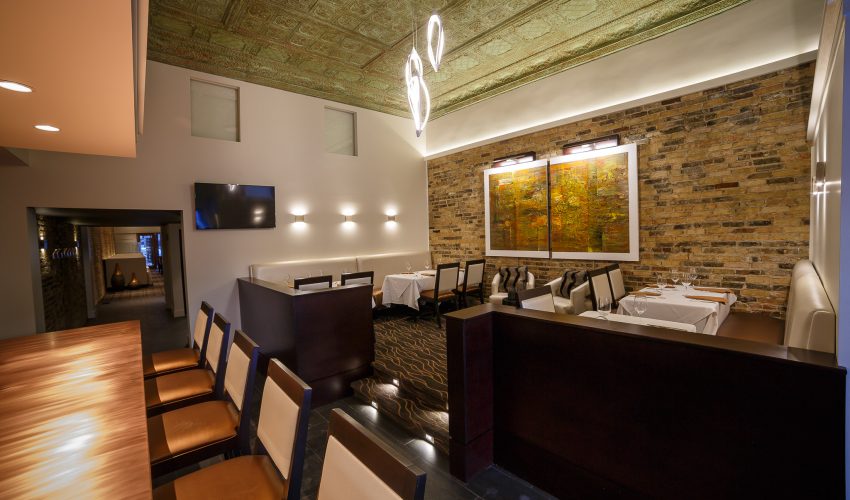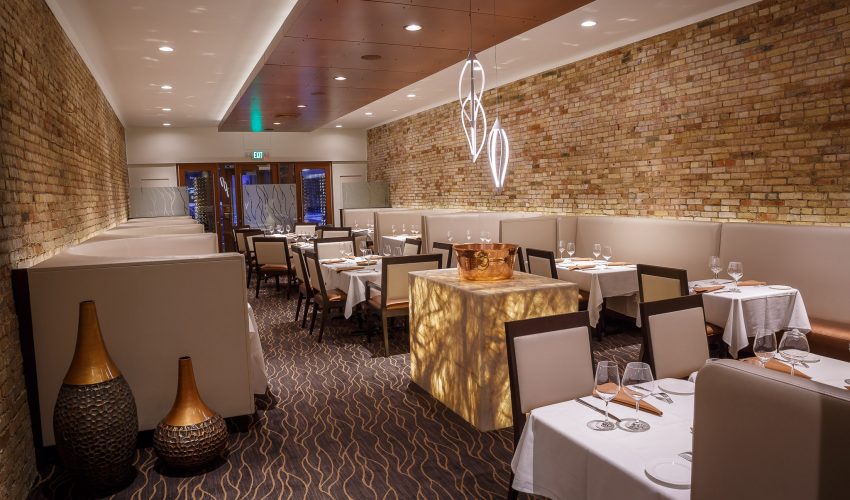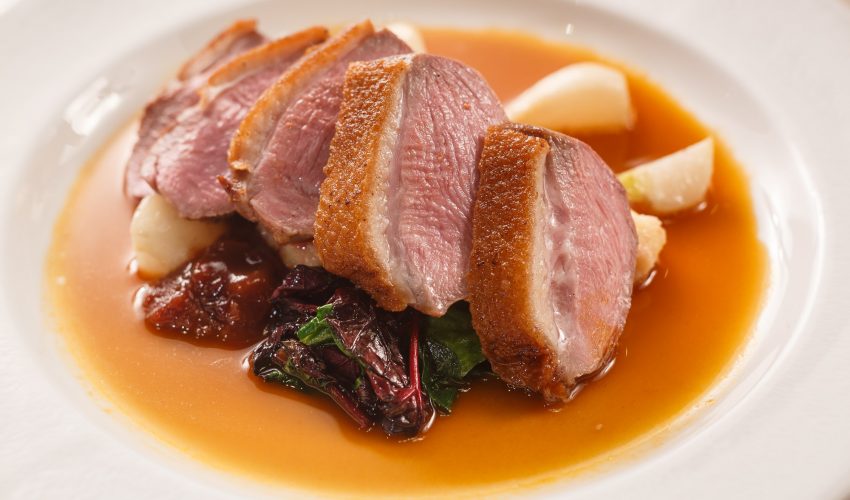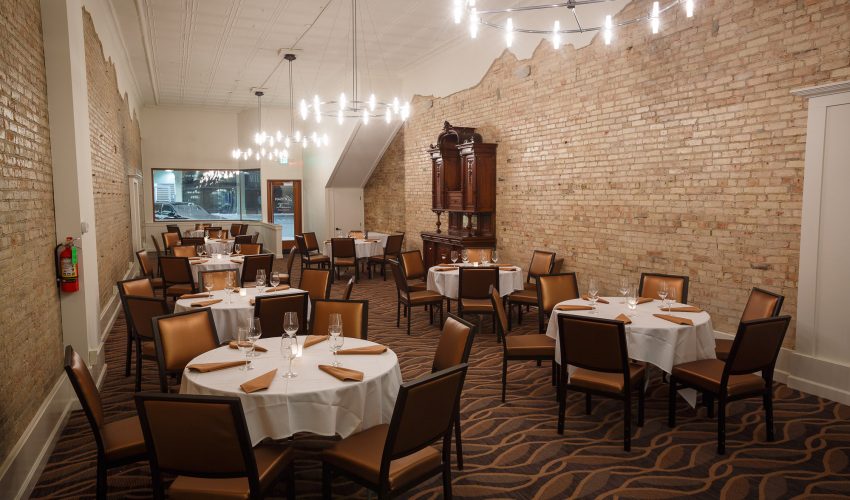NEWS
Back for Seconds
Restaurants need to make an impression from the street to stand out in the crowded marketplace. Non-chain restaurateurs often choose vintage buildings for their history, architecture, visual interest and distinctive ambiance. For blue-highway travelers on the lookout for refreshment stops, these repurposed landmarks are a must-see.
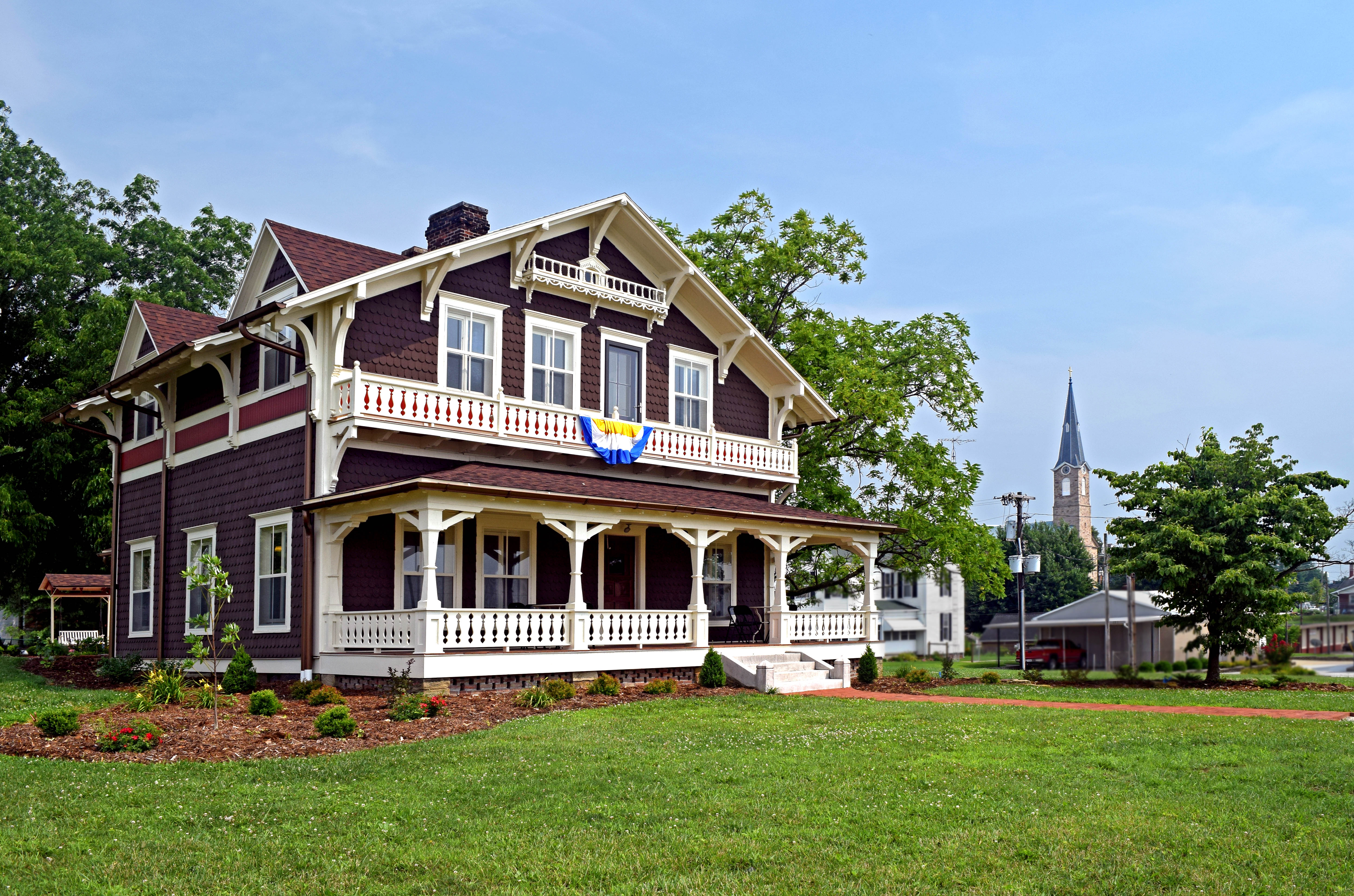
In Ferdinand, a Swiss doctor built a family home in 1903 to resemble the chalets of his native country. The Wollenmann House won a spot among our 10 Most Endangered in 2010 because its site—an entire block—made it a chain store demolition target when his elderly grandchildren put the house on the market.
To save the house, seven locals jointly purchased the property and donated it to the Ferdinand Historical Society. After a multitude of grants and volunteer labor returned the house to top-notch condition, the society hunted for a tenant to give the place new life and found Monkey Hollow Winery wanted to expand from its base in Saint Meinrad.
Monkey Hollow Bistro opened last October, offering soups, sandwiches, wraps, paninis, and salads, and baked goods. Paired with the wine and occasional live music and special events, the bistro fills a gap in the local dining scene. “We didn’t want to divide up the house,” says Diane Hoppenjans, one of the seven who helped it. “Its size and setting is ideal for this use.”
Although it didn’t appear on the most endangered list, Tell City’s Foundry and Machine Works languished for years until Derek Cronin and Chris Ramsey rescued it for reinvention as The Pour Haus, a combination brewery and restaurant with a beer garden. Built in late 1800s and rebuilt following a 1907 fire, the workhorse of a building had been vacant or used for storage, with holes in the roof, until the brewers stepped in.
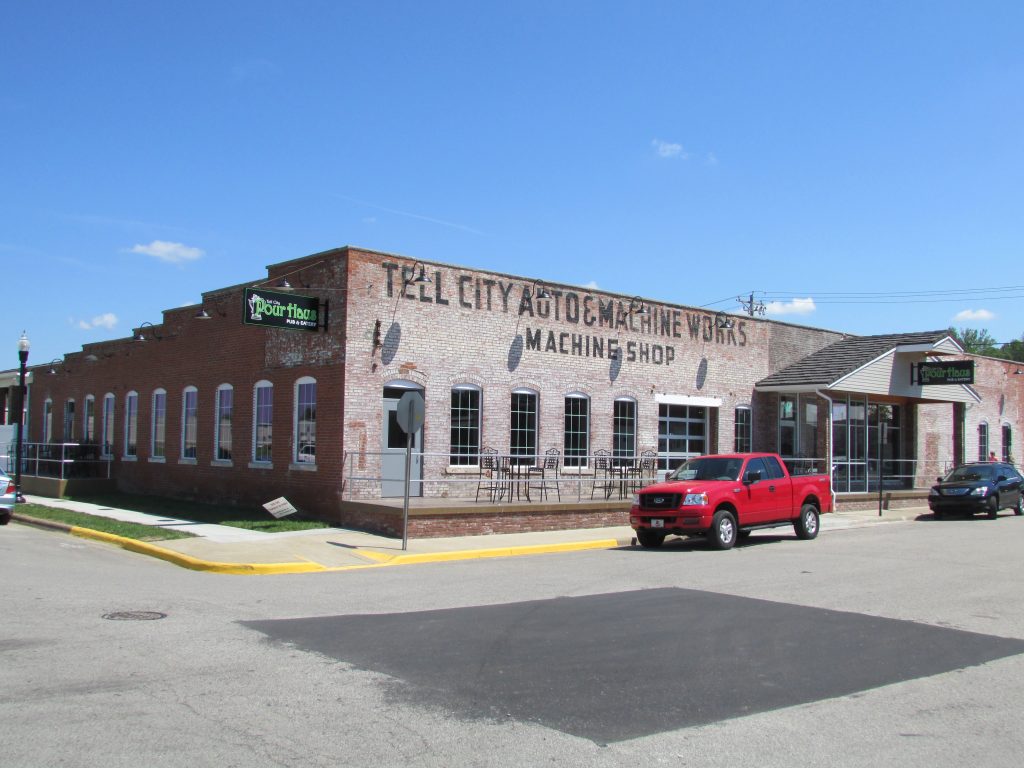
Pour Haus, Tell City
“Our contractors laughed that it was the first time they’d ever been rained out working inside a building,” says Cronin, a Tell City native. “But it had a look and ambience we couldn’t get from a new building.” The seven-month rehab by local contractors preserved original features and incorporated brick of the same vintage salvaged from a demolished structure in Cannelton.
The Pour Haus features American cuisine and an extensive selection of beers on tap. This summer they’ll introduce the onsite brewery’s products. Cronin notes that the pork chops are also a powerful draw.
Growing up, Mark Henrichs’ family often accused him of being a daydreamer. The memory inspired the name of his restaurant Revery, located in an 1861 commercial building—most recently a law office—in downtown Greenwood, a district that also appeared on our 10 Most Endangered list. The storefront windows and corner location sold Henrichs on the site.
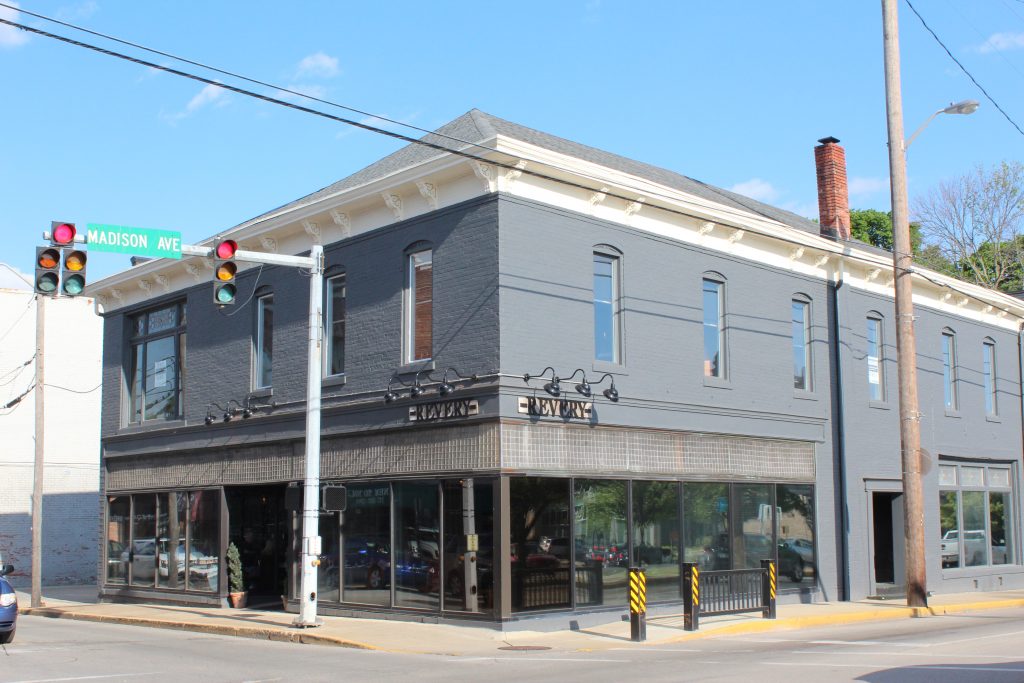
Formerly a law office, Revery’s location in a rehabbed nineteenth-century commercial building in Greenwood provides a charming dining experience.
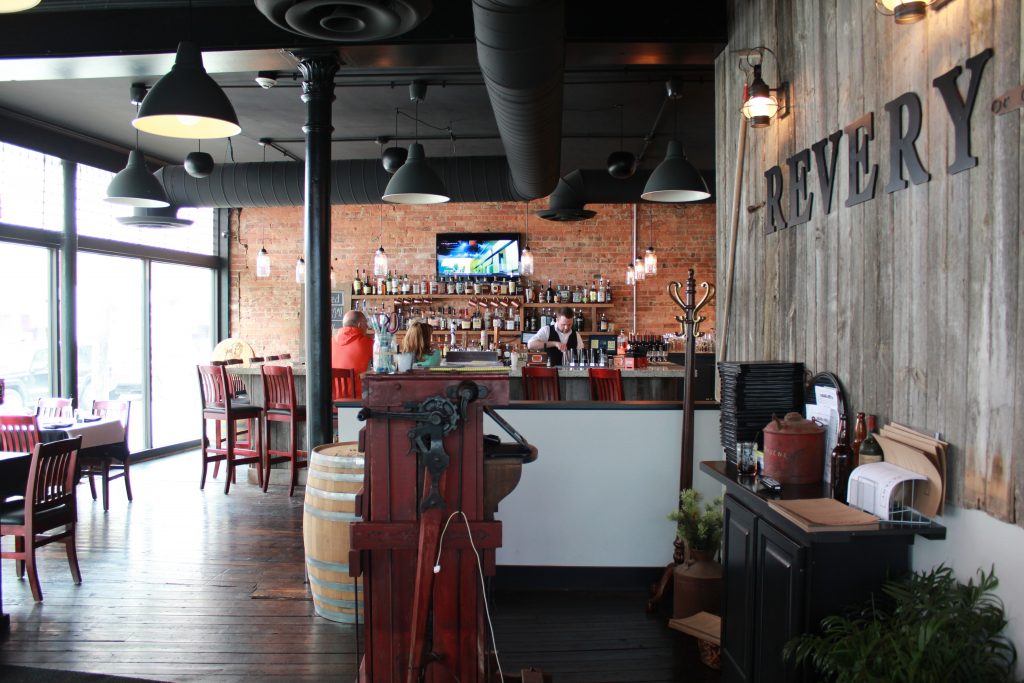
Revery, Greenwood
Workers removed carpeting to reveal the original wood floors and removed drop ceilings. Outside, a façade grant fueled a complete exterior makeover and new color scheme. When a turn-of-the-century printing press was discovered in the building, it became the hostess station.
Serving lunch, dinner, and weekend brunch, Revery uses locally sourced ingredients to create contemporary American cuisine with a twist. The dinner menu includes veal and mushroom meatloaf, Scottish salmon with red hot beets, and short ribs with brie-bacon-brussel sprouts. You’ll find fresh popcorn instead of bread on your table, although you can order bread served with house-made herbed ricotta. A second phase of the rehab created Bar Rev, a classic cocktail bar with a modern speakeasy vibe.
If you prefer dining in locally owned establishments, in places with a story, add these and the restaurants that follow to your travel itinerary. Bon appétit!
An Essential Ingredient
If you were writing a recipe for downtown revitalization, a key ingredient for success would be one-of-a-kind restaurants in historic spaces. A veteran establishment in Greencastle and a newcomer in Elkhart provide inspiring examples—and cuisine you’ll want to sample.
Over the past two decades, Almost Home has helped anchor revitalization in Greencastle. It started out in a landmark on the courthouse square as a tea room serving light lunches and expanded into an adjoining building with a full-fledged restaurant, and then again in the next building with an upscale bar, the Swizzle Stick. Specializing in “stylish comfort food,” the restaurant features sandwich and salad staples along with dishes like espresso and spice-rubbed filet, eggplant torte, and strawberry pizza.
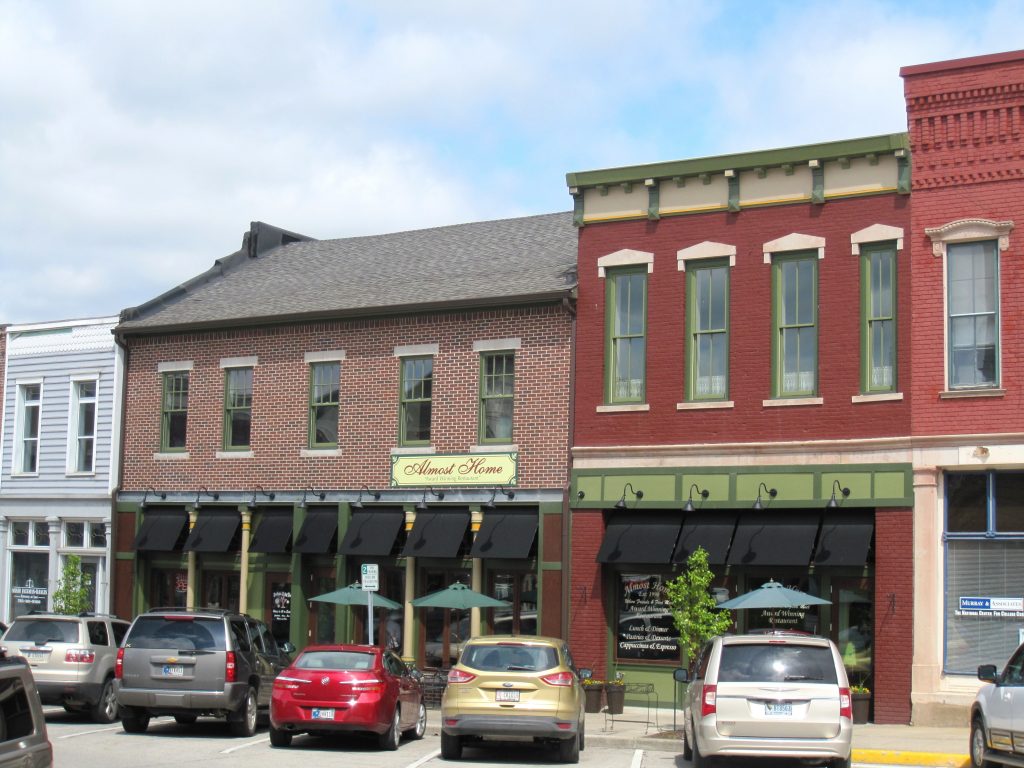
Almost Home, Greencastle
Though the historic brick and tin ceilings had long been on display inside, the facades of the two nineteenth-century buildings were recently restored to their historic appearance, thanks to façade renovations made possible as a result of Greencastle’s Stellar Community status.
The restoration and reopening of the historic Lerner Theatre in 2011 spurred investment in downtown Elkhart, which in recent years has seen new restaurants open in historic buildings, and already-existing eateries step up their game. The new kid on the block is an upscale destination that broadens downtown’s offerings.
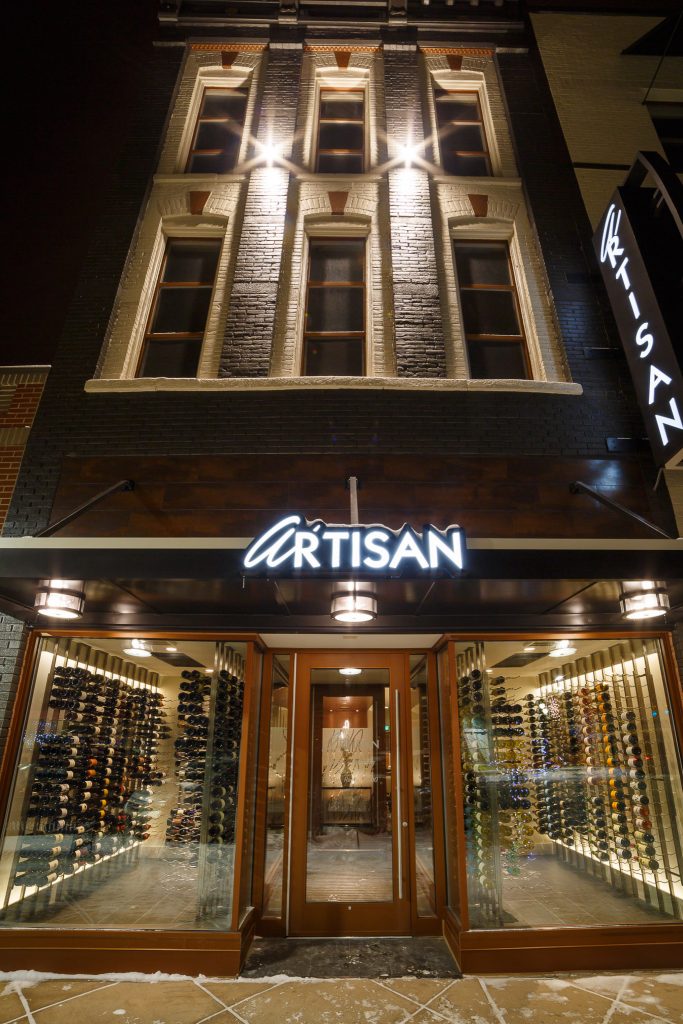
Artisan, Elkhart (Photo: Peter Ringenberg)
Restaurateur Kurt Janowsky opened Artisan in 2015 in a nineteenth-century commercial building that had a collapsing floor, plumbing, electrical, and HVAC issues. The impressive Italianate exterior helped balance the interior woes. Exposed brick walls and tin ceilings now mesh with modern decor that highlights the restaurant’s emphasis on fine dining. The menu changes every few weeks to give patrons frequent reasons to return.
Janowsky had experience installing restaurants in historic buildings, having previously started Café Navarre and The Exchange in century-old South Bend landmarks. “I like interesting spaces, not vanilla boxes,” says Janowsky. “These old buildings are charming. You can’t build charm new.”
When the Moose and Elk Move on
Historic lodge buildings offer high-style, character-defining buildings in small towns and big cities across the nation. Their places in their communities run deep, since the buildings for generations hosted all sorts of special events that reached beyond the lodge membership. Today, as the declining population of Masons, Elk, Moose, Odd Fellows, and other fraternal orders leaves communities challenged to find new purposes for these landmarks, two eastern Indiana towns offer waistline-expanding examples of reuse.
Be forewarned: the No. 9 Grill in Cambridge City follows the mantra, “No diets allowed.” The restaurant, with a winning reputation for its steaks and burgers, occupies the ground floor of the 1898 Knights of Pythias lodge. In 2011, brothers Tyler and John Fortman and their cousin Brandon saw an opportunity to build their dream restaurant in the local landmark.
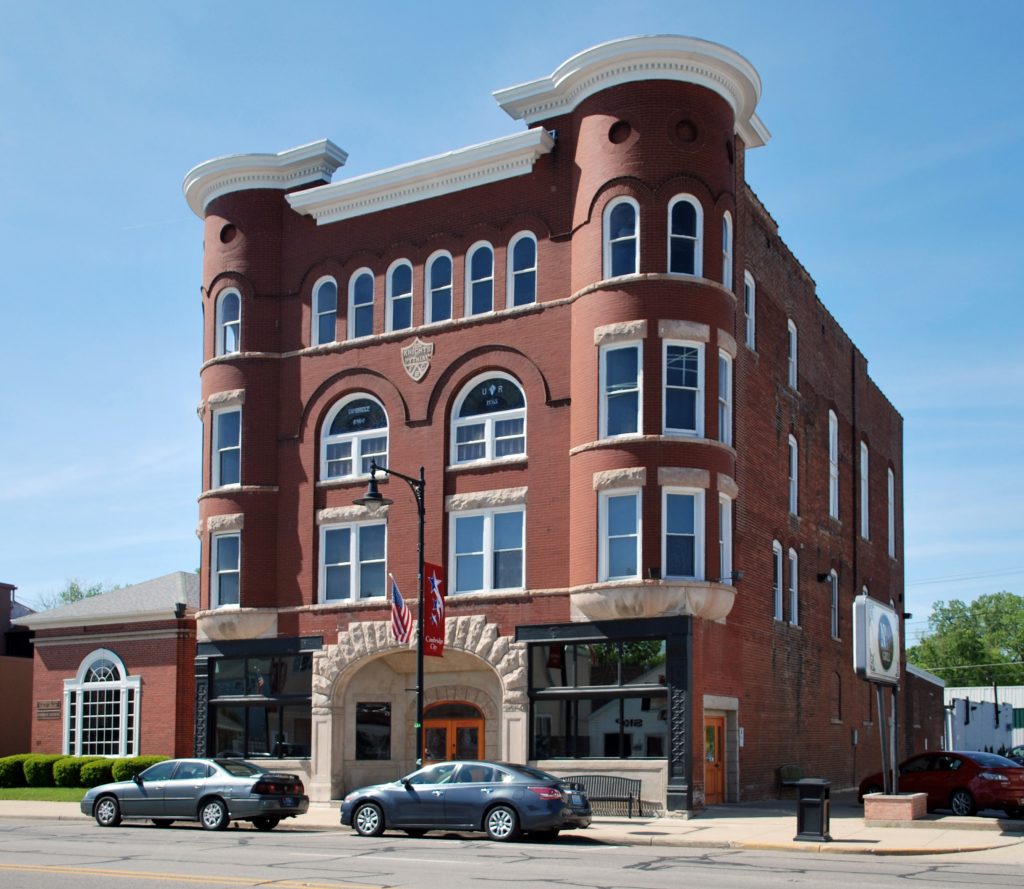
No. 9 Grill, Cambridge City
The trio peeled off a ‘60s-era shed awning tacked at street level, and used historic images to guide their rehab of the arched limestone entry. Inside, they removed plaster to expose the original brick and uncovered column capitals that had been hidden by a drop ceiling. The building’s history as Knights of Pythias Lodge No. 9 inspired the restaurant’s name, and you can spot the No. 9 reference in the stained glass rescued and displayed in upper floor windows.
In Farmland (pop. 1,300), the turreted brick-and-stone exterior of the Odd Fellows Lodge is an eye-catching standout in the downtown streetscape. Inside, black-and-white checkered floors, a classic soda fountain, Coke memorabilia, and images of Elvis Presley and Marilyn Monroe invoke a ‘50s diner atmosphere, hinting at the specialties of the Chocolate Moose.
The restaurant, a key ingredient in the revived downtown, makes its burgers and breaded tenderloins from locally-sourced meat. Fries and chips are homemade, too, and hand-dipped milkshakes come in cold metal tumblers. Try the double bacon cheeseburger with sweet potato fries and Green River pop. As we cautioned, these community-friendly lodge reuses may blow your calorie limit for the day.
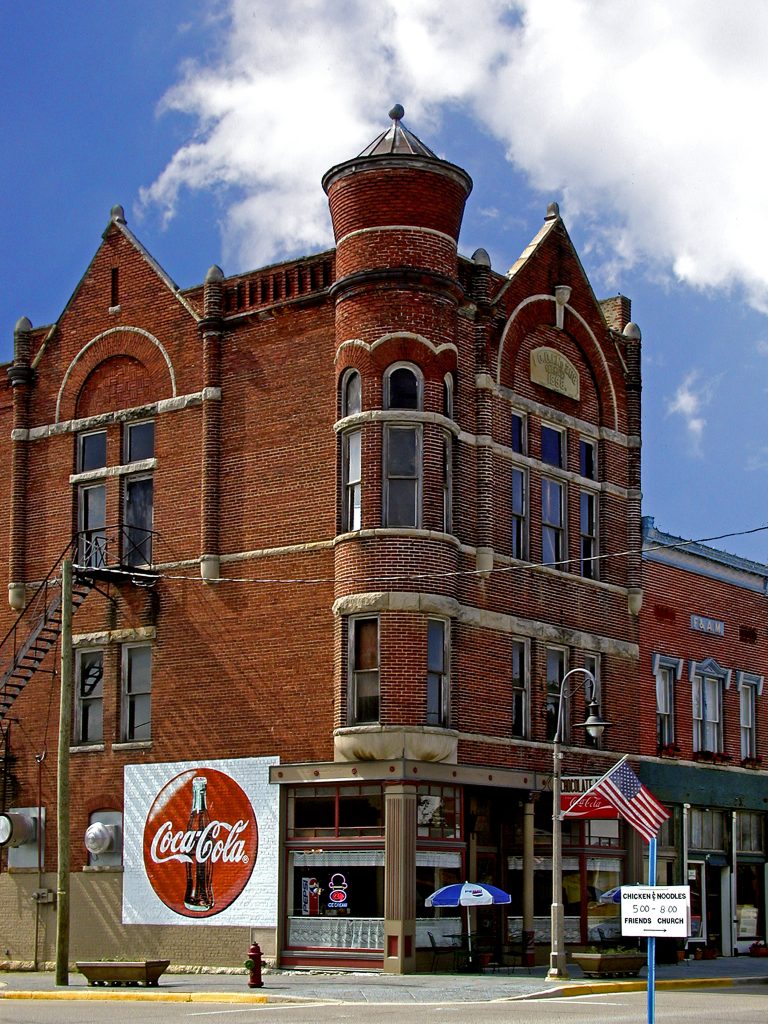
Chocolate Moose, Farmland (Photo: Lee Lewellen)
Fuel Up
Flanking the Monon Trail on 54th Street in Indianapolis, two vintage gas stations repurposed as eateries give fueling up a whole new meaning.
Nearly 20 years ago, Carole and Howard Leuer saw a 1920s stucco house as a Mediterranean-inspired venue for a restaurant serving the home-cooked Italian dinners Carole wanted to create. They kept the original look, inside and out, to create a cozy fine-dining experience at Mama Carolla’s, open for dinner only.
Success bred a sibling when the couple turned a dank corner filling station down the street into a sunny breakfast and lunch diner. Good Morning Mama’s retro interior invites you to sit in tubular chrome chairs at ’50-style tables—or spin on a drugstore stool at the counter—for omelets and pancakes or Hawaiian and Hoosier versions of Loco Moco. Are you intrigued?
Across 54th Street from Mama’s places, a year-round farm market occupies another vintage gas station. In most weather, the overhead garage door stays up all day at Locally Grown Gardens. Displays of fresh fruit and vegetables replaced the gas pumps. Inside, you’ll find fresh breads, desserts, refrigerated items, and lunch or dinner at the counter. Be sure to save room for the sugar cream pie—or take a whole one home.
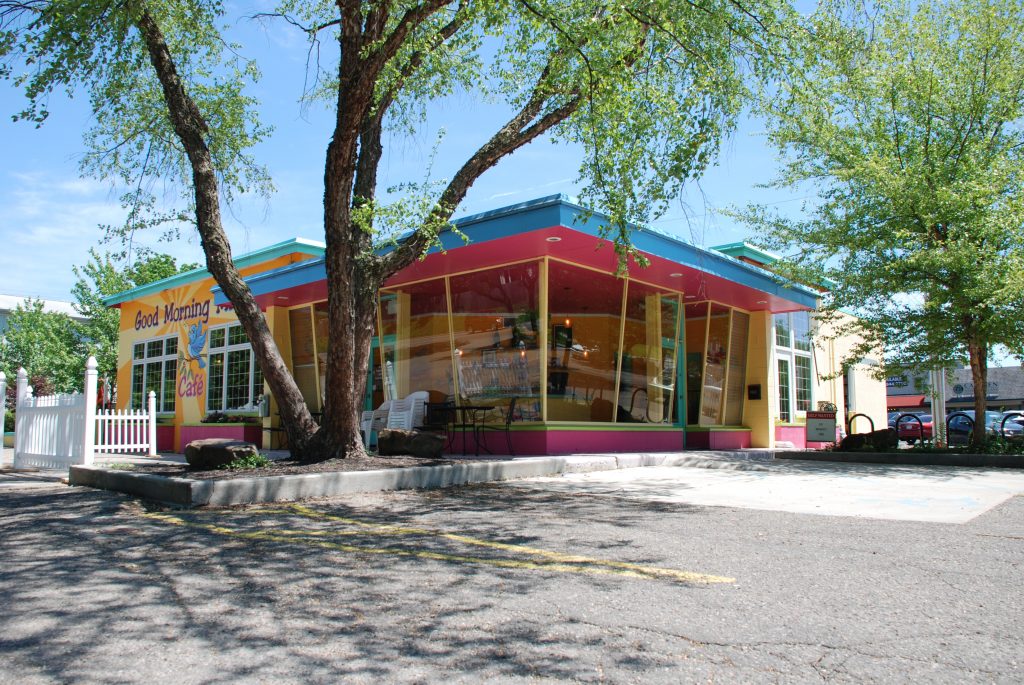
Good Morning Mama’s, Indianapolis
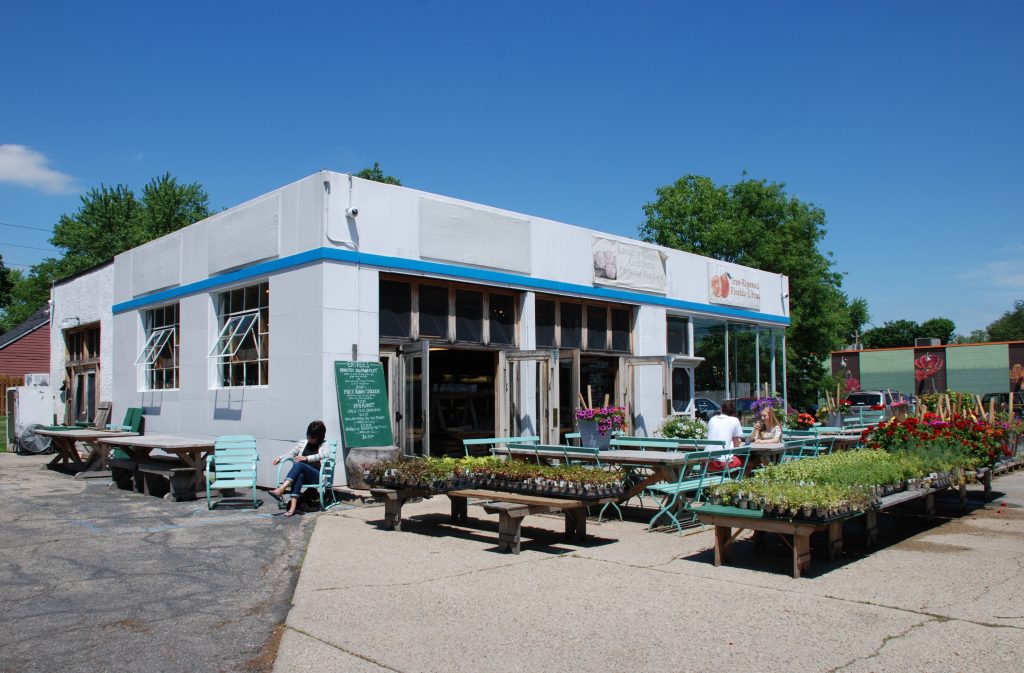
Locally Grown Gardens, Indianapolis
Home Cooking
Historic houses make great restaurants. Lots of visual interest, cozy to elegant atmospheres. In northwest Indiana, three houses repurposed as restaurants draw diners from distances.
Hobart’s 54 Main Bistro presents farm-to-fork creations in an 1895 house with waterfront dining overlooking Lake George. Seasonal ingredients inspire an ever-changing menu, providing an opportunity to try something new on each visit.
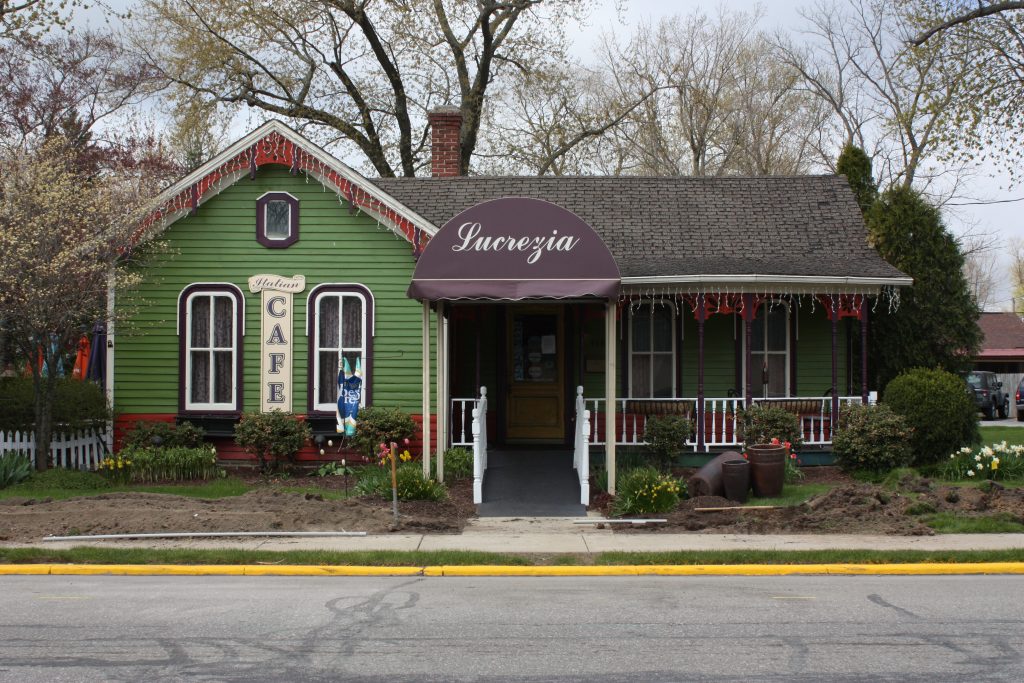
Lucrezia, Chesterton (Photo: Cory Johnson)
Lucrezia Café—with two locations in historic abodes—specializes in northern Italian fare. Lucrezia occupies a charming, brightly painted 1876 cottage in Chesterton, and a large c.1900 Queen Anne-style house in Crown Point. The menu includes traditional Italian dishes—linguine pescatore, sacchetti, polenta torte—and Indiana-inspired fare, like a pork chop with maple syrup and crispy bacon glaze. Please, may we have some more?
Stay up to date on the latest news, stories, and events from Indiana Landmarks, around the state or in your area.

